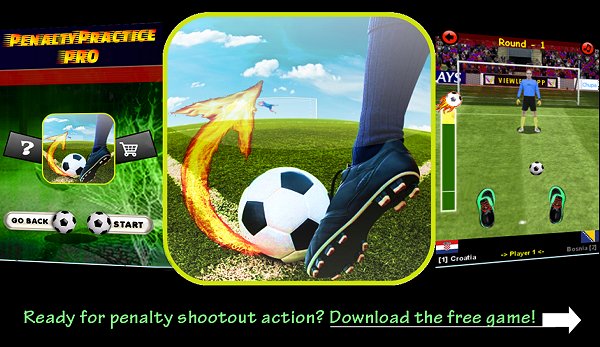Once a visitor lands on your product page, he’s got two options: either add your product to the cart and continue the checkout process or leave the page and go somewhere else.
In other words, product pages play a major role in turning website visitors into customers.
No matter how much traffic you drive to your website, how high-quality your products are, or how optimized your checkout process may be, no one will click on the Add to Cart button if your product pages are not up to par.
That said, they need to be in tip-top shape.
So let’s take a look at few ways you can tweak your product pages to increase conversions.
1. Use Quality Product Photos
Over 75% of consumers claimed that photos play a significant role in their purchase decision.
In other words, don’t skimp on photography!
Displaying a product with a single, low-resolution photo is a surefire way to drive customers off your web page.
Photos need to be professional and showcase your products in the best way possible.
Hiring a photographer might be a viable option.
For starters, include multiple images for each product. US digital shoppers expect six images and three videos on average when looking at a product on Amazon or other retailers.
That’s because shoppers want to know exactly how your product will look once it’s in their hands.
That said, make sure to showcase your products from all angles.
Furthermore, try to bring the shopping experience closer to the one from a physical store.
Let visitors zoom in and out on your images. Or, even better, display 3D models.
They’re interactive, engaging and enables users to examine your products through and through. Consequently, 3D models may increase your conversion rates by up to 250%.
2. Include Videos
While you’re at it, why not include videos as well?
They bring your products to life and offer an opportunity to highlight their benefits engagingly. You can also provide more value by educating potential customers about how to use them.
In addition, users who watch a product video are 64-85% more likely to buy the said product.
When creating product videos, make sure to keep them short. Around 30 seconds should be enough.
Lengthy videos may deter users from watching them in their entirety. They might not even go through them at all.
Also, try to highlight benefits and features that might not be as easy to spot in images. This further reinforces the idea of why visitors need your product.
Lastly, make videos relatable, as this allows you to establish a more personal connection with the audience.
You can do this by highlighting your customers’ pain points and presenting a solution, for example.
3. Improve Site Speed
Although photos and videos can increase conversion rates significantly, they may also negatively impact your website’s loading speed.
Given that 53% of mobile users will abandon a site if it doesn’t load within the first three seconds, this is a significant drawback.
However, there are plenty of solutions.
Start by compressing your image and video files. Tools like YouCompress can significantly reduce file size without sacrificing much on quality.
We’ve also talked to a few experts from a company that offers services, including web development in Chicago, and they said that other effective methods to decrease loading speed are reducing the number of HTTP requests, disabling unnecessary plugins, using a content distribution network, etc.
4. Display Social Proof
No matter how great your product page may be, users might still hesitate to buy the product.
That’s because consumers often seek reassurance in their purchase decision, and if you don’t give them that reassurance, they’ll likely click away.
That said, make sure to display social proof.
Product reviews and scoring systems are a great way to start. That’s because 79% of consumers trust online product reviews as much as personal recommendations.
Also, make sure to include various trust badges throughout your product pages. Most importantly, the SSL certificate
badge.
This indicates to users that your checkout process is secure and their credit card information is protected.
The 30-day money-back guarantee is a handy badge as well. This eliminates the users’ fear of buying a product online. You can place it near the Checkout or the Add to Cart buttons.
5. Write Informative Product Descriptions
Product descriptions can do more than provide a few details about a product and help increase your page’s rankings on the search engine results page.
You can also use them to connect with your visitors, get them excited, and ultimately turn them into buying customers.
For starters, your descriptions need to provide precise details about your products.
That said, it should answer the following questions:
What are your products for?
Who are they for?
What sets them apart from other products?
How do they work?
Why should people buy your products?
That’s not all, though. You should avoid using robotic language. Otherwise, your descriptions will seem bland, and users will likely skim over them rather than read them thoroughly.
You should instead spice things up a bit.
Take a look at your target audience. For example, if it predominantly consists of younger people, you should use an informal tone.
Also, rely more on verbs rather than nouns or adjectives.
This way, you’ll be able to connect with your audience, appear relatable, and lead potential customers to imagine themselves using your products.
Lastly, you need to emphasize readability. A large wall of texts will likely put users off.
Use short sentences, larger fonts, and bullet points to highlight your products’ key features or benefits.
6. Create Compelling CTAs
Your Call-To-Action buttons need to be bold, clear, and stand out from the rest of the page.
In terms of visibility, be sure to use contrasting colors. If the button is the same color as the background, users won’t notice it.
Furthermore, place the button where visitors will see it right after entering the product page. Putting it next to the photo is a good idea.
In terms of its copy, there’s no need to be creative, as you need to let users know exactly what will happen once they click on the button. That said, a simple copy, like “Add to Cart” or “Buy Now,” will do the trick.
You can also add a sense of urgency by adding a countdown timer, for example.
But make sure to run regular A/B tests. This will help you maximize the efficiency of your CTA buttons.
7. Use Exit-Intent Pop-Ups
If a user decides not to buy your product, it doesn’t mean you’ve lost him.
You can still use exit-intent pop-ups. These are overlays that appear once a user attempts to leave the website.
You can use them as a last resort to convince visitors to return to your product page. For example, you can ask them to read the reviews, present what items they left in the cart, show them a limited-time offer, etc.
Another handy way to use these pop-ups to your advantage is by encouraging users to sign-up for your email list.
Once you have their email, you can send out offers that might attract their attention.
But, be sure to give them something in return, like a small discount for their next purchase, as this will incentivize the user to type in his address.
Final Words
Product pages are critical in optimizing conversion rates.
If they display your products poorly, offer vague information, and are frustrating to use, visitors will most likely not add anything to their carts, regardless of how well-done the rest of your website may be.
Your products need to steal the show. That said, provide high-quality photos, videos, social proof, and informative descriptions, as these are vital factors that influence a visitor’s purchase decision.
Also, your website’s performance needs to be top-notch. Otherwise, users might leave before they ever get to see the products.



